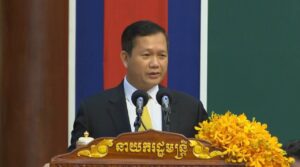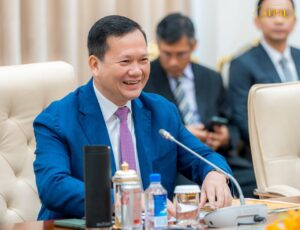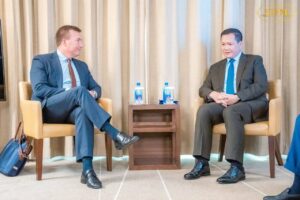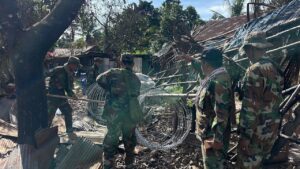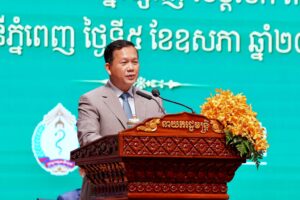(Video) Selected Comments of Samdech Thipadei Hun Manet: New history textbook complements previous ones for grades 4, 5, and 6
(8) New history textbook complements previous ones for grades 4, 5, and 6
On issue of the book (to learn history) […] it is said that the Ministry of Education (Youth and Sports – MEYS) is trying to change history by preparing a new textbook that will make Cambodia appreciating its neighboring countries […] while in fact, this book is a complement to the previous history textbook for grades 4, 5, and 6 of the primary school level […] may our professors, students, and intellectuals who have this much knowledge, be independent in their thinking before making decisions. I wish you do not just believe what someone says. Please research clearly so that you can make the right decisions. Learning is for possessing the ability to think independently […] regarding those criticisms – firstly, it is the content of the history text, and secondly, the book cover (that they claimed to have copied from the monument built in memory of the Vietnamese volunteer army) […]
This could be something that confuse people and, in the end, we Cambodians are fighting each other, as history has shown. While pointing to other countries as a risk factor, in the end, Khmer people fight each other, thus weakening themselves […] regarding the first point, which is that the content shows gratitude to Vietnam […] I urge that MEYS upload a digital copy on the internet so that people abroad can download it and read what is wrong with it […] the historical content in Chapter 4 is about the People’s Republic of Kampuchea and the State of Cambodia from 1979-1993, the establishment of a new regime after the overthrow of the genocidal Pol Pot regime, and the restoration of the country. They are historical facts […]
That some claimed this book is written about gratitude to Vietnam, (I have already checked) the book does not say much, except for one line on page 41 and one line on page 42, which talk about the National United Front for Salvation of Kampuchea cooperating with the Vietnamese volunteer army to overthrow the genocidal regime of Pol Pot, to provide protection, and work on restoration of the country […] apart from that, it talks about the achievements of the Khmer ancestors – Samdech Preah Sihanouk’s generation, and later the fact that the Khmer people came together to find peace, […] MEYS does not try to talk about history with any country […] all the content is about the Khmer people, the Khmer leaders, doing everything for their children in the future, and to understand their own history clearly […]
(9) The win-win monument is a symbol of national unification but also of the post-unification development and peace
The win-win monument is not only a symbol of the national unification phase, but also of the post-unification development and peace time […] the win-win monument is the result of the combination of factors that we have these days, where our young people are not at the fight or dying in battle, and having the opportunity to learn […] the fact that the country ended the war, we have been able to mobilize capital to invest in the education sector […] you may have seen/heard about what had happened at Ta Moan Temple lately […] the prominent figure that has appeared (on social media) is His Excellency Nak Vong, the current commander of Division 42 […] if there was no win-win policy, His Excellency Nak Vong, one of the former Khmer Rouge commanders, would not have become the commander of the Royal Cambodian Armed Forces […] this is a tangible achievement […]
(10) The win-win monument is the symbol of keeping peace, protecting the territory and independence, and not to be divided internally
The real factor that we are united as one Cambodia, one army, and together protect the territory is because we have had the political factor of win-win politics, the ending of war, and all Cambodian factions come together […] the opposition politicians have tried to distort the political fact about the win-win monument to be grateful to others. It is absolutely not. The win-win monument is Cambodia’s. It is the symbol of keeping peace, protecting the territory and independence, and not to be divided internally […] it is demanded that the Cambodian younger generations understand historical factors because without it the country had been divided internally because of the wars since after the Angkor period, and left the country in gradually weaker position […] once disunited, the war will return, and there stands no chance to compete with anyone. We need to understand clearly the meaning of the win-win monument, the peace, the meaning of the textbook and the concept that the government has put in it […]


